
By his own admission, Ron Thal – better known to fans around the world as Bumblefoot – has been a busy bee. He’s talking to us today to promote Whom Gods Destroy, the new band featuring ex-Dream Theater keyboard wizard Derek Sherinian and Whitesnake/Trans-Siberian Orchestra multi-instrumentalist Dino Jelusick on vocals, as well as rhythm section Yas Nomura and Bruno Valverde.
Their debut album, titled Insanium, is out now via InsideOut Music just a month after the release of a record from Thal’s other band Art Of Anarchy. And, as we find out, there’s another solo instrumental effort finished and ready to be unveiled in the very near future. It doesn’t take long to figure out the man we’re speaking to feels like he has little time to waste…
The newest project, Whom Gods Destroy, was formed after the dissolution of another supergroup Sons Of Apollo, with Thal and Sherinian choosing to continue their creative exploits under a different guise. And if you listen to just about any track from this inaugural release, it’s once again clear there’s a striking chemistry at play – with many a midrange conversation between the guitars and keys, the pair thriving on an almost telepathic level.
Sherinian is no stranger to working with top-tier guitar talents, of course, having collaborated with the cream of the crop over the years, with standout names including Slash, Joe Bonamassa, Allan Holdsworth, Joe Satriani and Al Di Meola. Things might not have worked out in Sons Of Apollo, especially following the news of drummer Mike Portnoy rejoining Dream Theater, but this particular musical alliance between Thal and the keyboardist has certainly not run its course...
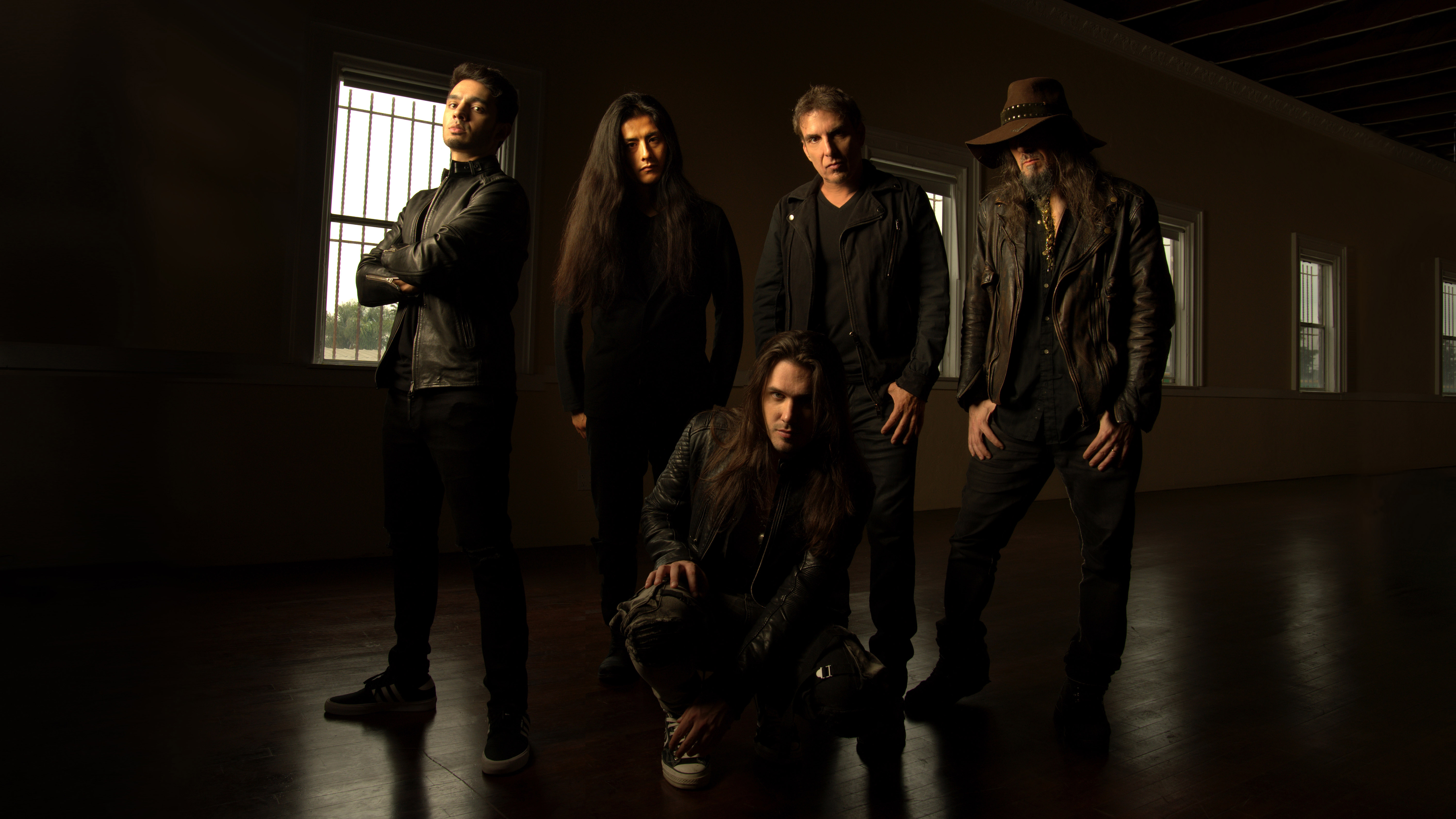
“As many people know, we recently worked together in Sons Of Apollo,” explains Thal, when quizzed on the ins and outs of their creative partnership. “This time we stepped it up and it definitely feels like the next chapter for the two of us. I always wanted to go a bit heavier and turn up the intensity of everything. Let the crazy be crazier. Let the heavy be heavier and the passion be more passionate. It was all pushed to the max. I think of it as a day at the gym where you stay a little longer and sweat a little more.”
I always wanted to go a bit heavier and turn up the intensity of everything
So, all puns intended, which of these new tracks ended up soaking the towels most? They were all pretty challenging, reasons Thal, but one definitely comes to mind first thanks to its usage of both necks on his trusty Vigier signature...
“There was a lot going on guitar-wise... I definitely fucked myself there!” he laughs. "The song Crawl, which came out just before the album, doesn’t sound super hard but some of the riffs and leads are so out there. There are little things that probably don’t sound like much until you try playing them. And it was all recorded years ago so now I’m trying my best to remember it all.
“In the chorus section, I’m using both necks on my double neck Vigier at the same time. There are a lot of little things in there that are going to make my life hell! And the best thing is I did it to myself. I could have made it easier and written something like Smells Like Teen Spirit but no, I had to push the boundaries with two necks at once and make life problematic!”
From his work in Guns N’ Roses and Asia to the groups listed already, Thal has vast amount of experience sharing sonic space with keyboardists and other guitar players. While his solo releases tend to be more of a melodic one-man band affair, where he’s usually joined by a drummer and perhaps a few guests on woodwind or stringed instruments, in a group context he prefers to welcome more musical information to coexist alongside him. As he goes on to explain, it’s something that stems from his childhood and the artists that captured his imagination early on...
Other than maybe Led Zeppelin and Van Halen, I was raised on music that always had more than one guitarist
“It’s fun playing with another guitar player or a keyboardist or some other midrange-bandwidth instrument. I feel like there’s more you can do. Other than maybe Led Zeppelin and Van Halen, I was raised on music that always had more than one guitarist. It was bands like AC/DC, Kiss, The Beatles and all the old-school metal stuff like Priest, Maiden and Queensrÿche who had those twin harmonies. It’s nice to have someone else in that range... I get to hide behind them so the attention isn’t on me!”
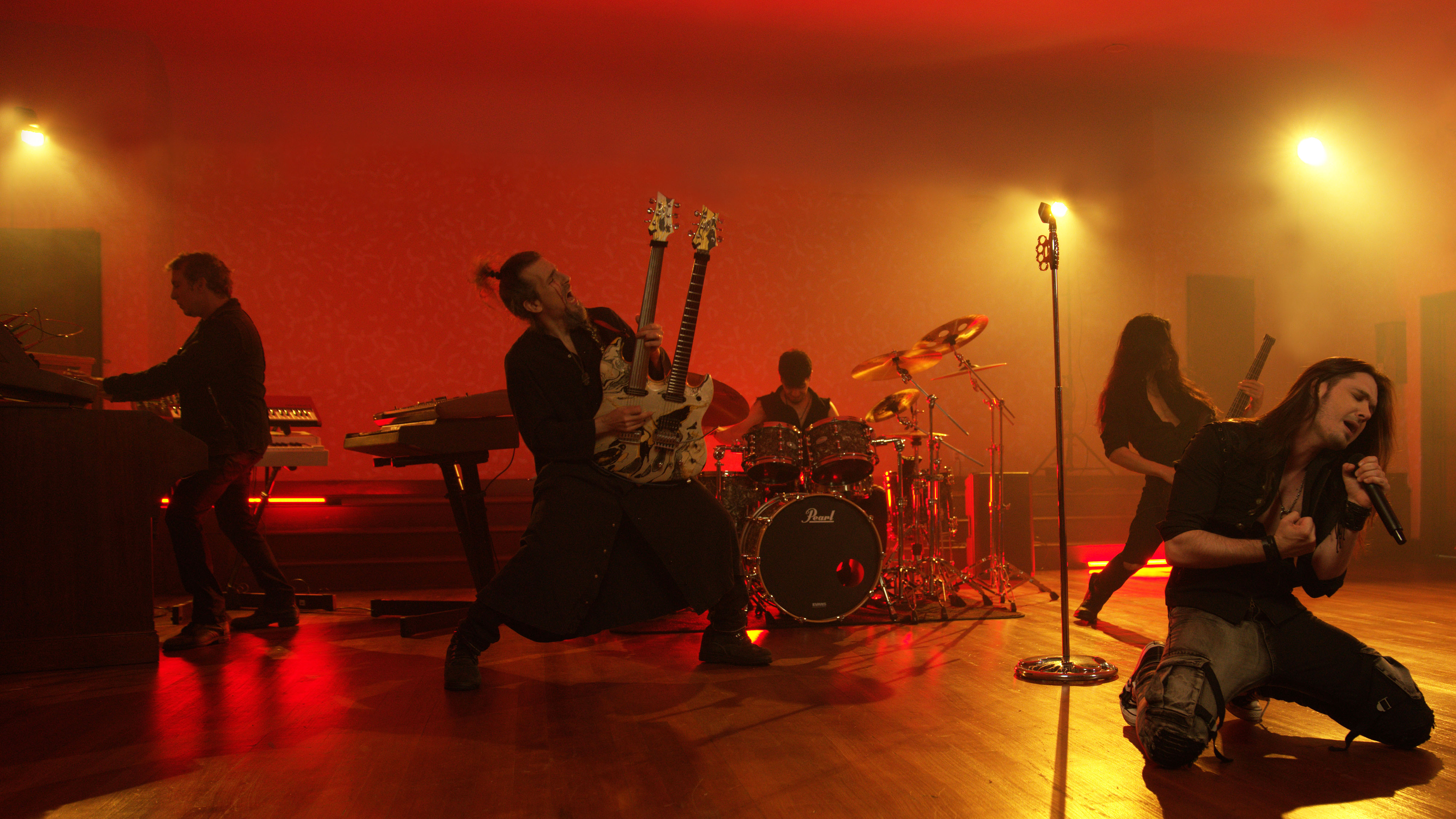
It’s a humble sentiment. Anyone familiar with the man’s work will know he’s more than capable of holding his own without any help whatsoever. So how exactly does a player of Thal’s calibre continue to raise the bar? He once joined the biggest rock band in the world, went on to form supergroups with members of Dream Theater, Whitesnake and Mr Big, and has guested on albums for musicians as highly revered as Guthrie Govan. It turns out his recent homework has been something seemingly simple, which, despite its importance, many players tend to overlook...
With all the time at home, my soul calmed down a bit and so did my vibrato
“Over the pandemic, I feel like my vibrato changed,” admits Thal. “It used to be very wide and frantic, with this wild puppy energy. With all the time at home, my soul calmed down a bit and so did my vibrato. I experimented with speed and width, and even tried out a gentler side-to-side vibrato. That’s probably what I’ve paid more attention to recently, certainly more than I did in the past…
“I never figured out the Steve Vai circular motion one, it feels so sexual when I try it [laughs]! But everyone has their own unique fingerprint. You can tell from one note whether it’s John Sykes, Gary Moore or Zakk Wylde. And Yngwie Malmsteen for sure, especially the way he’d come from the bottom of the neck right up high and then bend. Ace Frehley, on the other hand, had that slow style of vibrato. It’s how you let people know it’s you playing.”
Speaking of building a familiarity between the musician and the listener, here are the three most essential pieces of gear that Thal relies on to create his signature sound...
1. Vigier DoubleBfoot Ron Thal signature
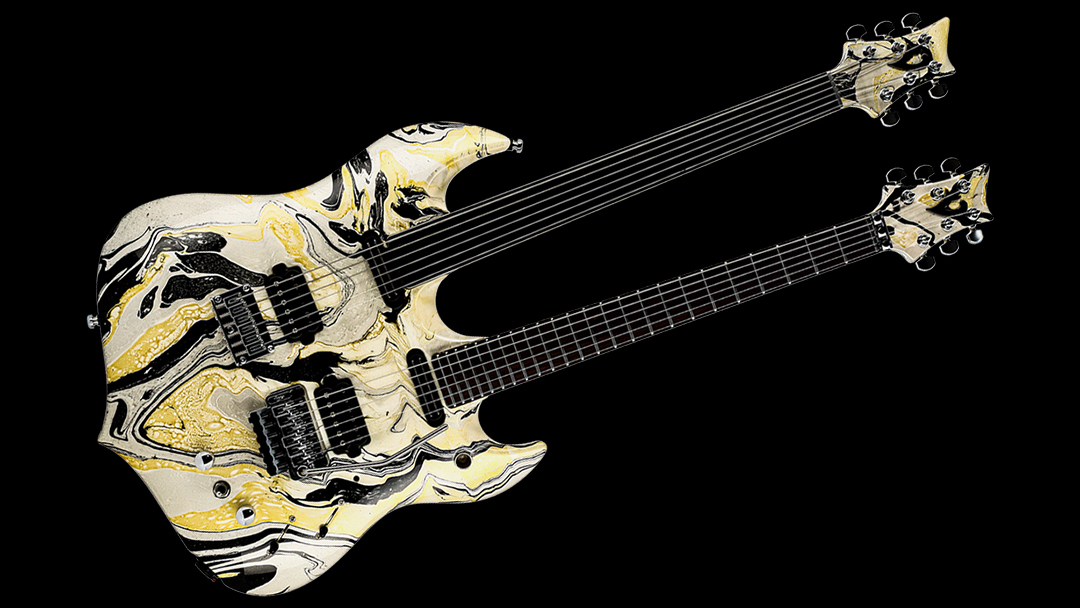
“Let’s start with the guitar, this particular one is from 2017. There’s no truss rod in the neck, it’s carbon fibre holding it together. It has 24 frets with the Zero Fret system. As for pickups I use a DiMarzio Tone Zone in the bridge and a Chopper in the neck position, controlled by a five-way selector.
"I can choose between the bridge as a humbucker, the bridge as a single-coil, the bridge and neck together, the bridge and neck out of phase and finally just the neck. I have no tone knob, but there’s a little something extra thrown into the volume knob that means it doesn’t go too dark or dull as you turn it down. So even with a lot of grit on the amp, I can roll my volume down nearly all the way down and it won’t get muddy – it will sound like a clear and shimmery clean guitar.
There is a killswitch on the guitar, too. I don’t use it that much these days, it was mainly for the Chinese Democracy songs like There Was A Time
“There’s also a neck selector, so I can choose which neck I’m using: one is fretted with a rosewood fingerboard and the other is fretless, made out of an alloy or stainless steel kind of metal. They won’t tell me what it is and would have to kill me if they did! But it has lots of sustain and sounds great. There is a killswitch on the guitar, too. I don’t use it that much these days, it was mainly for the [Guns N’ Roses] Chinese Democracy songs like There Was A Time where Buckethead would introduce a killswitch into his leads. Other than that, I’m not much of a killswitch guy.
“I have a magnetised hole in the bottom horn where I can pull out a metal thimble that I use on the smallest finger on my picking hand. I use it to tap on the string beyond the fretboard to essentially replace the non-existent frets. Once you’re past the 24th fret, instead of touching the string to a metal fret, I am touching a metal thimble to the string in hopefully all the right spots. It works great for the bridge pickup.
“You can also hold the thimble in front of the bridge and the string will then ring a shorter distance, stopping at the thimble rather than the bridge. It’s almost like moving the bridge forwards and changes the scale of the guitar – your frets will become higher in pitch than they normally would be. You’re essentially taking away the intonation of the guitar! I can even do that after a bend to create jumps that wouldn't be physically impossible. The thimble can also come in handy for tapping. I can get the same notes but keep my picking hand in the same kind of area, instead of moving it onto the fretboard and then back again.”
Line 6 Helix
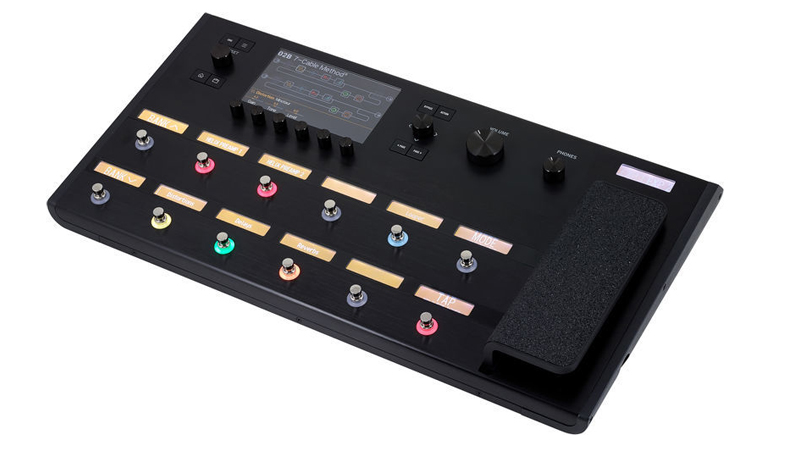
“This one thing has replaced 95% of my rig! Since I’ve been using it, I’ve become so comfortable with it. We all have certain things we just look at and can instantly get what we need intuitively. For me, that’s the Helix. I didn’t need to read the instructions, I could use it straightaway. Because of that, I got a lot deeper into the parameters of it and started to fine-tune the exact sounds I wanted.
I use the Helix for absolutely everything beyond my guitar
“I use the Helix for absolutely everything beyond my guitar. I don’t run amps anymore, I go direct to the front of house. Since I’ve been doing that, I’ve been getting more compliments on my tone than when I was running the most wonderful analogue rig. You get the pure sound you worked on. You lose that when you play a gig and the house engineer puts a microphone that might not be the best one for that particular speaker cabinet at an angle that is maybe not optimum. It’s hard to get that consistent ‘best sound’ in those scenarios. But this fuckin’ Helix absolutely did everything I could possibly want!
“The one I use is the step-on floorboard version. They all sound great and have the same guts. Anything I do with the plug-in will sound exactly the same on the pedal. I like having the same exact sound every time!
The internal routing is also incredible, it allows you to do things that would be impossible in the analogue world
"The internal routing is also incredible, it allows you to do things that would be impossible in the analogue world. After my in-front effects, I tend to run two different amps: one being a clone of an Engl, which is the main sound, and then there will be a second amp and cabinet that I mix in enough just to fill any frequencies that might be missing. Then I sew them back together and put that into another IR of a cabinet at 50%.
“By doing that, I get rid of any high-end digital grit. It smooths it out and sounds so much more like sound moving through air in a room. You can control any parameter through the expression pedal – instead of it being a wah or volume, it could be changing specific elements of the EQ or the amount of reverb or the delay time. You can have one amp fade out and another fade in. There are so many wonderful things you can do that would be hard or impossible to pull off in the non-virtual world.”
DigiTech FreqOut
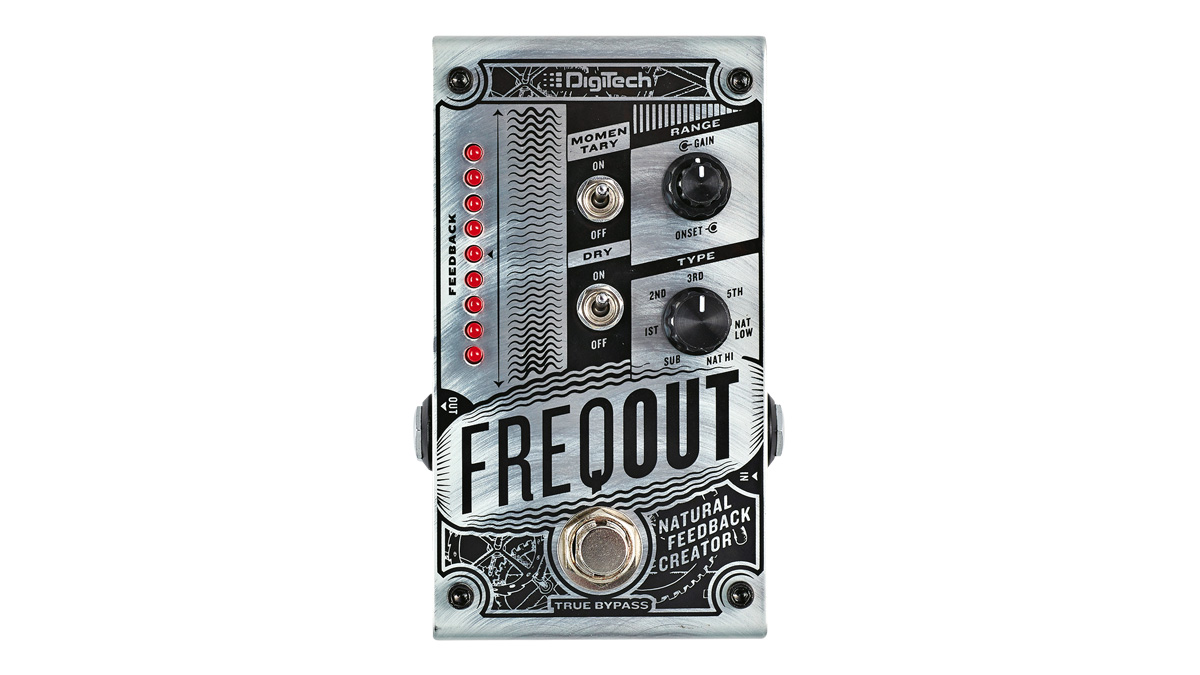
"Lastly, this is something I got my hands on last summer and I’ve been using ever since. As I’m not going to have a wall of speaker cabinets that I can stand next to and get feedback from, this thing is going to do that for me.
They call it a natural feedback creator, and yeah, it’s pretty damn good
"You can have it as a momentary switch that you just step on, or you can keep it on while also controlling the speed it comes in, how loud it is compared to your dry signal, which harmonic you’re hitting and more. They call it a natural feedback creator, and yeah, it’s pretty damn good. It’s fun to hold a note and let the overtones come in.
“I can allow certain notes to pulse in and do things that would never happen the same way a second time. It’s a very useful tool to produce unique ‘moments’. It’s a fairly newish pedal, I can see MusicRadar did a review of it back in 2017. Obviously DigiTech are masters of these kinds of quirky effects. The Whammy was a game-changer. Once that pedal came into the picture, everything felt different. There were new sounds and ideas happening that weren’t there before… just look at Rage Against The Machine!”
Insanium, the debut album from Whom Gods Destroy is out now via InsideOut: more info







